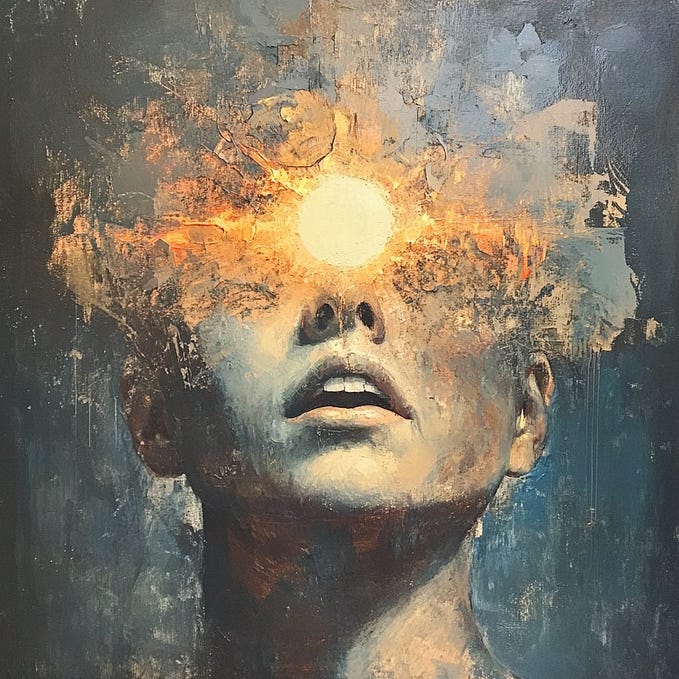The Making of ‘Am (i) Normal?’
Lucy Donagh and Charlotte Alford won a Yellow Pencil for their groundbreaking entry to Mind the Pleasure Gap, our brief with Teen Vogue for the 2020 D&AD New Blood Awards. Join them below to hear about the creative process, asking friends and family to draw vulvas on zoom, and what comes next.
When The Case for Her and Teen Vogue collaborated to write a brief for D&AD New Blood, an advertising competition for young creatives, we knew we had to enter. The brief was about closing The Pleasure Gap, a movement that encourages women to learn and speak up about what they want in the bedroom and to stop settling for mediocre (or more often than not, disappointing) sexual experiences. It is a movement that encourages self-expression, confidence, and equality across the board. It is a movement that we truly care about and, still to this day, want to do our part to promote its importance.
Apart from one Saturday in a cafe, surrounded by vulva drawings and one slightly tipsy Sunday afternoon, we worked on this project entirely remotely. This was partially driven by the lockdown, but also due to the fact that we live 400 miles away from each other — Lucy in Wales, and Charlotte in Scotland. This style of working was more normal to us than most others, but still, it came with challenges. Simple things like sharing ideas, documents, and resources seemed to take ten times longer as they became completely reliant on dodgy internet connections and good phone signals.
On one of our lengthy phone calls, we spent time thinking back to our teenage selves, getting all of our insecurities, hangups, and stresses around sex and personal pleasures out on the table. And it turned out there were a lot of them, which then led to an endless number of theories as to where the problems lay. Advertising 101 says “keep the problem as focused and as short as possible.” Well, we must have skipped that lesson because ours was turning into a grand thesis: “The problem is porn. The problem is education. The problem is men. The problem is the internet. The problem is… yadda yadda yadda.” Pick a problem, we had it.
For all of the brainstorms, books, podcasts, and personal (downright embarrassing) stories told, it turned out all we needed to see was a little penis drawn in the muck of a London train window for the penny to drop. We didn’t even notice it at first. Why would we? We are completely accustomed to them. It’s a simple drawing, one that can be seen anywhere, that you might have a quick giggle at and move on. One that we ourselves have drawn since preteen years. But did we ever see the female equivalent; did we even learn how to draw a vulva?
It turns out the answer was no. And not just for us; We asked friends, family, and focus groups the same question. We’d ask them to draw a penis and see them smile, knock one out, and proudly hold it up in a few seconds flat. Then we’d ask them to draw a vulva and see those smiles fade and people hesitate, looking to each other for guidance before cautiously showing us their attempts.

When we dug a little deeper, not only did we not know how to draw one, we found that a lot of girls are scared of their own genitalia; People feel awkward talking about them, of googling them, of taking a mirror and looking at their own. In the context of female sexuality, everything is taboo. We came to the realization that we couldn’t tackle the pleasure gap until we normalized the female body. So after months of racking our brains we finally knew what we had to do:
It was time for females to feel comfortable opening up and learning about their bodies.
It was time to normalize the female anatomy in the same way the male one had been done.
It was time to doodle.
It had to be fun, easy to draw, and customizable. Seems like a simple request but it took us weeks and a couple of trees worth of paper to come up with the design. If the testicles, shaft, and foreskin can be simplified to a couple of circles and a rod, why can’t the labia, clitoris, and vaginal opening be simplified to a couple of brackets and an i?
A simple drawing wasn’t enough. We decided that we needed to push the concept further and came up with a solution that would ensure that whenever anyone googled anything around “normal bodies’’ or “behaviors”, they would be directed to the “Am (i) Normal” forum. Here they could find accurate information and the hopeful realization that as long as pleasure is consensual and safe, that it will always be normal. We wanted artists to design their own fun and individual (i)’s and influencers and celebrities to encourage people to ask “Am (i) normal?” We had dreams of {i} covering everything, from stationary to taxis and anything else we could customize.
We still do.
Please don’t get us wrong, the acknowledgment we have received for our idea has been ridiculously lovely and overwhelming in the best way possible. We are incredibly proud to have been awarded a Yellow Pencil, something we wanted from the minute we started studying advertising. But while the competition is now in the past, the Pleasure Gap is still very much a current issue. We are completely comfortable with seeing penises everywhere. A little drawing might seem daft, but it’s time to level up the playing field and destigmatize the vulva in the same way. Let’s bring the same awareness to the vulva and give girls the confidence to realize that they are perfectly normal. In the brilliant book (that we recommend everyone reads) We Should All Be Feminists, Chimamanda Ngozi Adichie writes:
“If we see the same thing over and over again it becomes normal”
So while we don’t condone vandalizing school textbooks and tagging walls, we do encourage you to share (i)’s, everywhere. Whatever it may look like: with multiple brackets, with no brackets, with one side wavy and the other side flat — how you want to use it, is completely your decision and completely normal.
And to anyone thinking about entering the D&AD New Blood awards, all we can say is do it. You have no idea the impact it can have. Not only did it help us build connections within the industry and build our confidence in our abilities as young creatives; D&AD New Blood and The Case for Her and Teen Vogue brief is the reason two people went from a pair of acquaintances to a pair of acquaintances that knew each other’s favorite sex positions, to long-distance friends, to a slightly pixelated Welsh/Scottish Creative Team that will happily show anyone how to draw a vulva.
/ Lucy Donagh and Charlotte Alford
A final note to our fantastic mentor, Ryan, who from over eleven thousand miles away listened to all of our ideas. And boy, (or girl) did we have a lot of ideas. He didn’t mock us or shut us down, and we are ridiculously grateful for all the help we had from him throughout.






